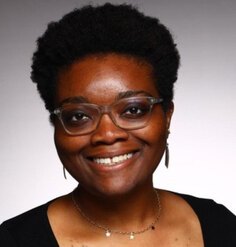5 Questions with Marieke Lacasse
December 1, 2014
Marieke Lacasse, ASLA is a Principal at GGLO in Seattle. She co-leads GGLO’s Landscape Team and is accustomed to large integrated design teams with heavily involved community participants. Her practice focuses on understanding the end user, intentional ideas and meaning, design excellence, innovation, and impeccable project delivery.
What are you drawing inspiration from right now?
I get inspiration from a multitude of channels — digital and social media, books, movies, lectures and by walking around my city. On the digital side, I receive content from and interact with multiple design groups on Facebook, Linkedin and Twitter. I follow the Cultural Landscape Foundation, Building Green, ArchDaily, CoDesign, LAF, LAM, Harvard Design Magazine and Design Intelligence. I check in every couple of days to keep up on trends.
With regard to books, I try to have a pretty varied assortment of things to read on the bus, lately: Silent Spring by Rachel Carson, an environmentalist classic; Thinking in Systems by Donella Meadows, an eye-opener on Earth’s minute resources and our current trends; The Craftsman by Richard Sennett, a reminder of our work and ethics; and a few leadership books: Fierce Conversations and The 21 Irrefutable Laws of Leadership. I’m just starting Community: the Structure of Belonging by Peter Block. All of these books were referred to me in the past 6 months or so, and I’m experiencing direct applications and use for their theories in my work.
I try to catch a lecture here and there but mostly watch TED talks on design and sustainability in the evenings when I have a moment. I recently returned from the U.S. Green Building Council’s annual Greenbuild conference, which I thoroughly enjoyed.
Last, I make sure I keep up with the new development and improvements that are happening in my home city of Seattle. The city is the fastest growing city in the nation, and an influx of projects has transformed neighborhoods at various scales. I usually make it a point to visit these transformative projects with my school-age daughters, and can experience it through their eyes as well. It’s great for inspiration!
What potential for sustainability most excites you on one of your current projects?
Sustainability at a district-scale is the most exciting to me currently. EcoDistricts take a holistic approach to advanced sustainability that improves neighborhood performance over time. They reduce pollution, increase efficiencies and natural partnerships, restore ecosystems and improve communities.
A great example of this is the Capitol Hill EcoDistrict report, completed in March 2012 through Capitol Hill Housing with a grant from the Bullitt Foundation. The team adopted performance areas (Community, Materials, Water, Energy, Habitat, and Transportation) to establish overall intent and specific goals, calculated baselines and researched synergies with city-wide targets. The EcoDistrict team then provided recommended targets for the Capitol Hill neighborhood and looked at strategies to reach the Ecodistrict’s objectives. Most importantly, the Ecodistrict will measure progress in the environmental performance areas over time.
Two years after the issuance of the report, we are exploring the catalytic heart of the EcoDistrict, a multiple site TOD project (currently in the proposal stage). This project intends to reference the EcoDistrict work and target some of the strategies: reducing carbon emissions, conserving potable water, promoting biodiversity and creating an equitable, healthy and vibrant community.
Furthermore, the Capitol Hill EcoDistrict has created a governance entity, complete with a dedicated Steering Committee and an Executive Director that manages current opportunities and priorities for implementation. GGLO is a founding Steering Committee member.
I’m also extremely interested in implementing a biophilic design approach in certain projects, particularly in senior housing with memory care. Many studies confirm that biophilic design or access to nature has measurably positive impacts on all residents. In memory care, the impacts are even greater: reduced stress levels, lower blood pressure, and best of all, improved cognitive functions and enhanced focus.
What do you need to know, but you don’t know right now?
Measuring what matters and determining the appropriate metric warrants deeper investigation. How can we expand on the appropriate metrics for health and wellbeing in the built environment or measure productive landscape and indicators of design to foster social cohesion? I want to start incorporating more data collection in our site analysis in order to establish a baseline and see measurable before and after improvements.
Since 2006, GGLO has been diligent with the implementation of building performance evaluations for Seattle-built projects. These evaluations highlight strategies to reduce energy and water use — but also see occupant behavior as a key variable. These evaluations have highlighted issues in building operations, and have resulted in positive changes for the maintenance, long-term operation costs and potential for design to support sustainable behavior.
Recently we have incorporated open space post-occupancy evaluations and are learning a few things about our designs, which we can use to promote effective implementation of active design principles in the future.
What advice would you give to emerging leaders in the profession?
Approach design collaboratively from a sustainable systems approach and learn Revit! Our office is making the transition for the Landscape staff, and most projects are modeled in 3D. GGLO is an integrated practice with Landscape Architecture, Urban Design, Architecture, and Interior Design services. Working collaboratively on dense, complex, urban-infill projects, it is imperative for us to work in Revit to achieve the results we are seeking.
Other software, such as Grasshopper, is enabling our teams to analyze sites, intersection density and viewsheds with great accuracy and has been instrumental in our data gathering. Learning various tools (GIS, Grasshopper, Rhino, etc.) makes your set of skills more valuable and delivers more targeted design results.
Keep the juices flowing. Be present, thinking, designing in everything you do: when you cook dinner, garden, play, relax, and especially when you’re taking a walk. Don’t turn off your brain; keep being inspired by your life, friends, environment, and your work. Many things about my daily work are completely mundane, but the little things that I do all week long contribute enormous amounts of inspiration for me and filter into the way I approach design.
What challenge would you give to emerging leaders in the profession?
Keep pushing yourself to be better, to learn more things, and to ‘walk the talk’. It’s important to live sustainably if that’s the core of what you do. Bike to work, reduce your waste, compost, volunteer. Take your role as a landscape architect seriously: the products and materials you specify have a very real impact on the environment. Use sustainably-sourced materials, select locally-sourced native plants and materials. Incorporate urban agriculture in your projects and think local. Design to make it easy for users to act responsibly.
Volunteer when you can, give your time to your local ASLA chapter or to sustainable groups in your region. Participate in grass-roots efforts for your community — it is often hard work, but the results are extremely rewarding!
GGLO is an integrated design firm practicing Architecture, Interior Design, Landscape Architecture, Planning, and Urban Design. The firm believes they have an opportunity and responsibility to play a lead role in designing, creating and sustaining community — places where people thrive. The research-based approach and integrated practice is focused on improving the relationship between people and place. GGLO’s designers work across scales and project types to create holistic neighborhoods, buildings, and public places.
Any opinions expressed in this interview belong solely to the author. Their inclusion in this article does not reflect endorsement by LAF.











